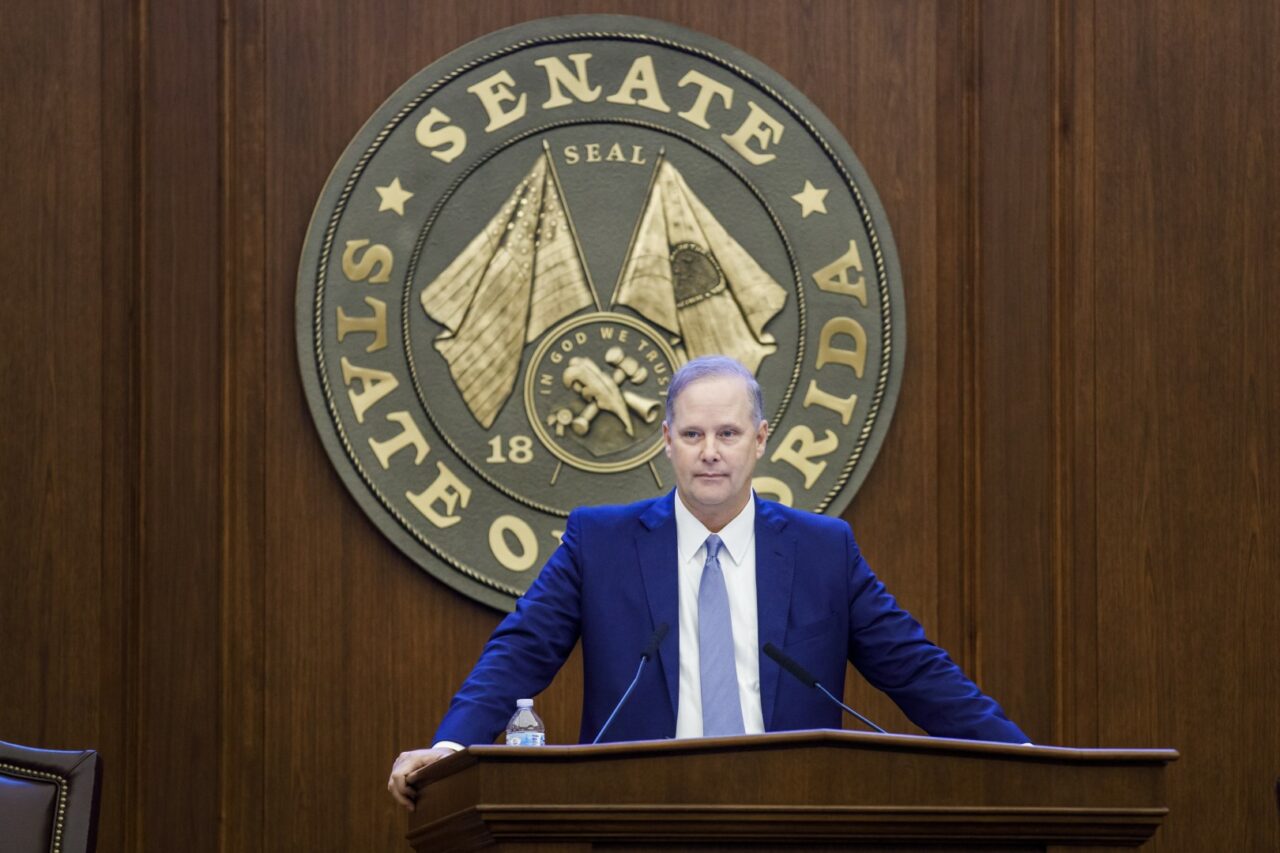
Low-paid state workers would see raises and K-12 schools would get a funding boost, as would nearly every portion of the state budget under a spending plan released Friday by the Senate.
The $108.6 billion proposal would be a more than $7 billion increase on the current year’s budget, thanks largely to an infusion of federal stimulus dollars given to states to cope with the COVID-19 pandemic.
Senate President Wilton Simpson, a Trilby Republican, has pushed to increase the pay for low-paid state workers by raising the minimum wage to $15. A constitutional amendment passed by voters in 2020 will push the minimum wage for all workers to $15 by 2026, but Simpson says the early increase is needed to recruit and retain workers in needed areas.
“From school bus drivers to maintenance and cafeteria workers to voluntary prekindergarten staff, every employee in our education system will be making at least a $15 per hour wage,” Simpson said in a released statement. “The same goes for health care, including caregivers who serve Floridians who are sick, elderly or have a disability, and those who work with at-risk children in our criminal justice system.”
The Senate plan, though, goes beyond the hike to $15 per hour. Those making $15 to $25 could see a pay increase as well. And employees working for state vendors, such as nursing home attendants, also will get pay increases. The total cost of the plan is $1 billion.
The Senate budget puts $24 billion into K-12 schools, an increase of $1.46 billion, or 6.5%. That pushes per-student funding to $3,294, an $808 jump on the current year.
“With a focus on early literacy and PreK-12 education, our budget includes historic funding to help ensure that every child is able to read before the third grade,” Senate budget chief Kelly Stargel, a Lakeland Republican, said in a released statement. “In K-12, a $1.4 billion increase is the second-largest total increase in funding in the last 30 years, and we believe the largest base funds increase in at least the last 25 years.”
Part of that funding includes $50 million to help school districts reach Gov. Ron DeSantis’ goal of getting teachers to a minimum salary of $47,500. Some districts, but not all, have hit that mark.
The spending plan, however, ignores other parts of DeSantis’ proposed budget, such as an additional $37 million in cancer research funding and his $1 billion gas tax cut plan.
In health care, the Senate would spend $47.8 billion, a $3.3 billion increase on the current year. Much of that stems from an increase in Medicaid caseloads, which shot up in the wake of the COVID-19 pandemic, as did federal funding for the program.
The plan will be reviewed and voted on at Wednesday’s Senate Appropriations Committee meeting, followed by a vote on the Senate floor later in the Legislative Session. That will set the stage for negotiations with the House for the final spending plan for the 2022-23 fiscal year, which begins July 1.
Late Friday, the Florida House unveiled its proposed $105.3 billion spending plan for the coming fiscal year.



